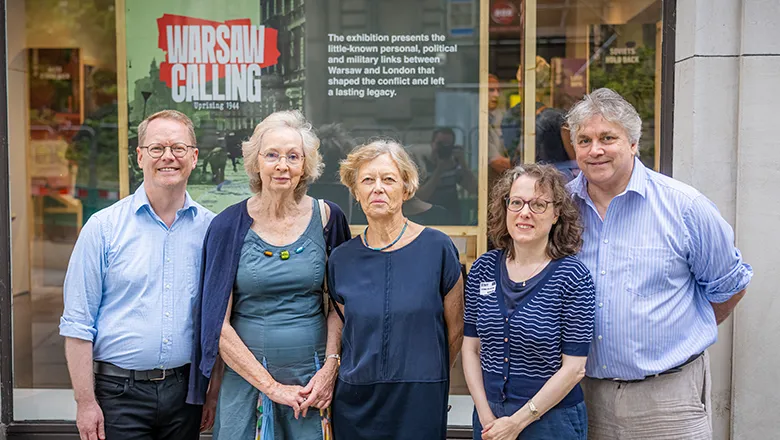'Warsaw Calling' Exhibition Launch
Join us for the exhibition opening, featuring an audio installation, a photography workshop, a documentary screening, and a...
09 July 2024
To commemorate the 80th anniversary of the 1944 Warsaw Uprising, the exhibition will be hosted from 20 July to 8 August in Bush House, King’s College London, highlighting little-known British links.

On 1 August 1944, the Polish resistance fighting the Nazis launched the Warsaw Uprising – one of the largest rebellions against Hitler’s rule in occupied Europe. Outnumbered and outgunned, the insurgents battled German troops for two months, before being forced to surrender. The Nazis killed an estimated 200,000 combatants and civilians and destroyed the city.
The Polish commanders wanted to take control of the capital before the arrival of the Soviet Red Army, which was approaching Warsaw’s eastern suburbs, sweeping German forces out of its way. The Poles believed that by establishing their authority they could somehow forestall the imposition of Stalinist rule. Their hopes were in vain - the Red Army halted its advance and failed to provide any real help during the uprising, while supplies from western allies, parachuted in, were too meagre to make a difference.
This dramatic story is told in a free exhibition, opening on 20 July in The Arcade, Bush House, off Strand Aldwych, and organised by the Polish Underground Movement Study Trust (PUMST) and the Sir Michael Howard Centre for the History of War, the Department of History and the Department of War Studies, at King’s College London.
The display focuses on the personal stories of the fighters involved in this terrible battle - and the civilians caught up in the conflict. The suffering, the courage and the despair of those involved resonates widely in today’s world with its multiple violent conflicts.
For James Gow, Professor of International Peace and Security at King’s College London, “the Warsaw Uprising in 1944 is perhaps one of the less well-known actions of World War II and even less noted is the vital British link to it. Yet, it was one of the two or three biggest resistance actions in occupied Europe, a story of pride, honour and success that became one ultimately of sacrifice — and a contested point in the onset of the Cold War.”
The exhibition highlights the key role played by London in the uprising. The Polish Government, based there for most of World War Two, and the Polish military headquarters directed the fighting via encrypted radio links with the Warsaw officers. Secret messages went back and forth daily between Britain and the Polish capital.
The original signals remain in London to this day, in the archives of the Polish Underground Movement Study Trust, stored in a Victorian house in the western suburb of Ealing. As well as the messages, the building contains thousands of original files from the uprising and the personnel records of the officers, soldiers, fighters and spies.
The documents were deposited after the war by London-based commanders and by many fighters who managed to make their way to the west, as well as by others in Poland. The house itself was acquired and turned into a study centre, now used by researchers from around the world.
The Trust is affiliated and works closely with the London-based Polish Institute and Sikorski Museum, which holds archives of the Polish government-in-exile and the Second World War Polish military and has given invaluable help in preparing the exhibition.
More information: https://www.warsaw1944.uk/#home
News story author: Stefan Wagstyl, Polish Underground Movement Study Trust (PUMST)

Join us for the exhibition opening, featuring an audio installation, a photography workshop, a documentary screening, and a...